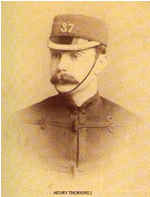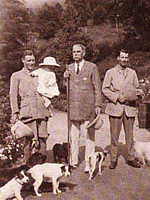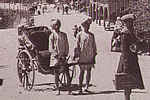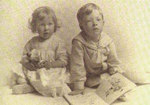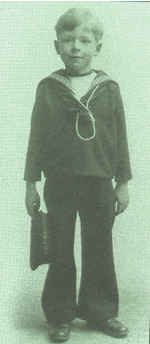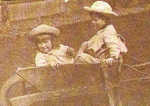 |
 |
 |
|||
|
20 facts about Sir Henry 1/ Sir Henry signed himself 'Kaka' because his baby grandson Teddy's attempts at saying grandpa sounded like kaka. He was known as this by his grandchildren for the rest of his life. 2/ Sir Henry wrote from England every week to each of his four grandchildren with remarkable regularity for years when they were in India. 3/ Sir Henry sent picture cards with captions as each child reached 18 months then illustrated letters from the age of five onwards. 4/ Sir Henry was born in India in 1854 and acquired a wide knowledge and love of India. This shines through in his letters and cards. 5/ His drawings of an Indian scene or landscape are all lovingly done. He specialised in Indian birds and animals. 6/ Although Sir Henry was writing throughout the 1914-18 war he appeared to want to shelter the grandchildren from the horrors. Instead, he wrote about wildlife, scenery, sports and inventions. 7/ Sir Henry's letters to Teddy describe a remarkable variety of inventions. Tales of aviation, experiments in gliding, parachuting and airships accompany descriptions of the first telegraphic transmission of pictures and a little unmanned jet propelled plane taking mail across the Atlantic. 8/ Sir Henry's correspondence shows his fondness for not only his own grandchildren but for children everywhere. The letters are full of encounters with unfortunate or sick children that he met by accident or on visits to hospitals such as Great Ormond Street in London. 9/ Sir Henry had a particular soft spot for blind children and was a frequent visitor to St. Dunstons in Brighton, England, which is still a leading blind school today. To amuse the children he commissioned special sweets with tins in the shape of butterflies so they could imagine what they looked like. 10/ Sir Henry was very tall, 6'8" in his socks. He had a small family car and removed the front seat so he could drive from the back. 11/ His daughter (the grandchildren's mother) disapproved of him sending them comics so he wrote them picture cards every week that continued for eight weeks until the story was complete. 12/ Sir Henry was the epitome of the English army career officer in the British Colonial service in India of the early 1900's. He was very successful and made cantonment magistrate of the Andaman Islands and is credited with introducing many species of tree which subsequently provided important export revenue for the islands. 13/ Discovered in an attic after 60 years by Sir Henry's great, great grandson Charles, this is probably the last great children's classic to be found with genuine original material of some 1200 illustrated letters, cards and envelopes written between 1903 and the late 1920s. 14/ The book 'Pictures in the post' about Sir Henry and containing a selection of his letters went to No. 8 in the UK bestsellers list and was chosen by the Princess Royal as her book choice for Christmas that year. 15/ The popular BBC TV children's programme 'Blue Peter featured the discovery of the letters and the publication of the book. 16/ Amazingly, after the programme, eight more people came forward to say they too had received letters and cards from 'Kaka' when they were children and had also kept and treasured them. This was featured on Blue Peter the following week. 17/ Such were his administrative skills with the British Raj in India that he was responsible for arranging for piped water to be brought to 500,000 people "all this in a jungle place where partridges, hyaenas and jackals normally dwell" 18/ He was eventually made a Knight Commander of the Indian Empire, a title he had once before turned down as "it would merely add 10% to my bills" 19/ Sir Henry excelled at most sports, he played Cricket for the MCC at Lord's and earned a reputation for hitting sixes. Because of his height, special extra large bats were made for him. At tennis he demonstrated that he could beat top Wimbledon players and was considered good enough to play for England in both sports. 20/ In his letters Sir Henry encouraged his grandchildren to take an interest in their local habitat and surroundings. He asks them to look out for different plants and animals and report back to him in their letters. Even though he mentions their replies in his letters unfortunately none of the Grandchildren's letters have been discovered. |
|
